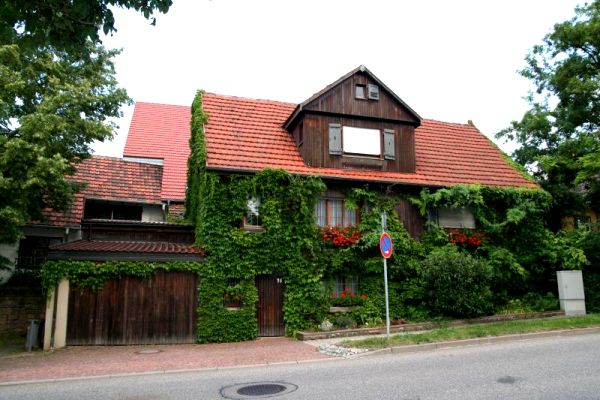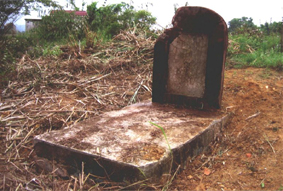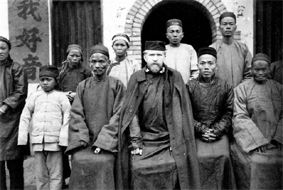|
Wilhelm
Maisch writes from China:
"When
I came here, the missionary did everything. That changed now. Everyone
has to carry his load and his responsibility. The missionary is only in
charge of all. I reatin them not only the burden but also the dignity.
That way the relations of European and Chinese didn't get worse but
much better."
|
| Wilhelm Maisch is born on the
13th of January 1878 in Gerlingen. He is the son of the master
carpenter and later forester Christoph Maisch and Marie, née
Zimmermann. He is a talented and curious boy who brings his mother with
questions nearly to desperation - so, that she threatened to run away
when her husband will not take sure that little Wilhelm can start
earlier than usually with school. That's the reason why Jakob Maisch
starts with five years of age with school. He is the youngest and after
a while the best student. |

Birth
place of Wilhelm Maisch: house in Hauptstrasse 75 in Gerlingen/Germany
|
Wilhelm Maisch
becomes construction and furniture carpenter. During his
apprenticeship he takes drawing lessons with a teacher named Uhl in
Gerlingen.
That will help him later to produce drawings for the Chinese which they
can
understand without words.
1897
Maisch joines the Missionshaus (Missionarie's House) in Basel,
Switzerland. After the occupational training he is sent to Hoschuwan in
China. The journey takes three months.
The named place is written in the actual
Pinyin-Writing Heshuwan and is located in the Meilin-District in the
Guangdong-Province (other, elder type of writing: Hoschuwan, Howan).
The Guangdong (old Canton) - Province surrounds Hongkong. If you look
at a map (e.g. the Times Atlas) and if you find the place Heyuan
(former Honyen), which is located about 170 km north of Hongkong at the
Dong Jiang (=Eastern River) then you find Heshuwan about 40 km east of
this city nearby a little river. Heshuwan itself and this river aren't
mentioned in this version of the Times Atlas. If you have Schlatter,
History of the Basler Mission, then you find these places at the added
map. At www.bmpix.org are
about 100 Bilder of the village - see SEARCH -> I agree
-> Geography -> modern state -> Asia (continent)
-> China (modern state) -> Guangdong (province) ->
Meilin (district)
-> Heshuwan (place). |
Wilhelm Maisch sets up his station and starts to involve the Chinese in
a independent way in his missionary work.
|
1911 Maisch becomes
responsible for the region of the "east river". That makes it easier
for him to gain acceptance for his ideas. 1922, after his second
departure, Maisch writes: A whole period of missionary's work in China
is finished, and a new period starts. The times are over, when foreign
missions and missionaries held the direction of the work exclusively in
their hands. The foreigner must come down from his dominating position,
must stand besides the Chinese and accept him as equal."
| After 16 years of patient work Wilhelm Maisch dies
on the 25th of June 1924 because of a heart failure.
He leaves behind about 500 photo dishes. The photos show impressions of
missionary and the life and the daily routine of Chinese. Today they
are in possession of the Stadtarchiv Gerlingen.
|

Grave
of Wilhelm Maisch in Kutchuk/China
|
Here
you can find a selection
of Wilhelm Maisch's photos.
|



